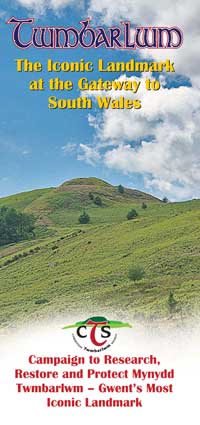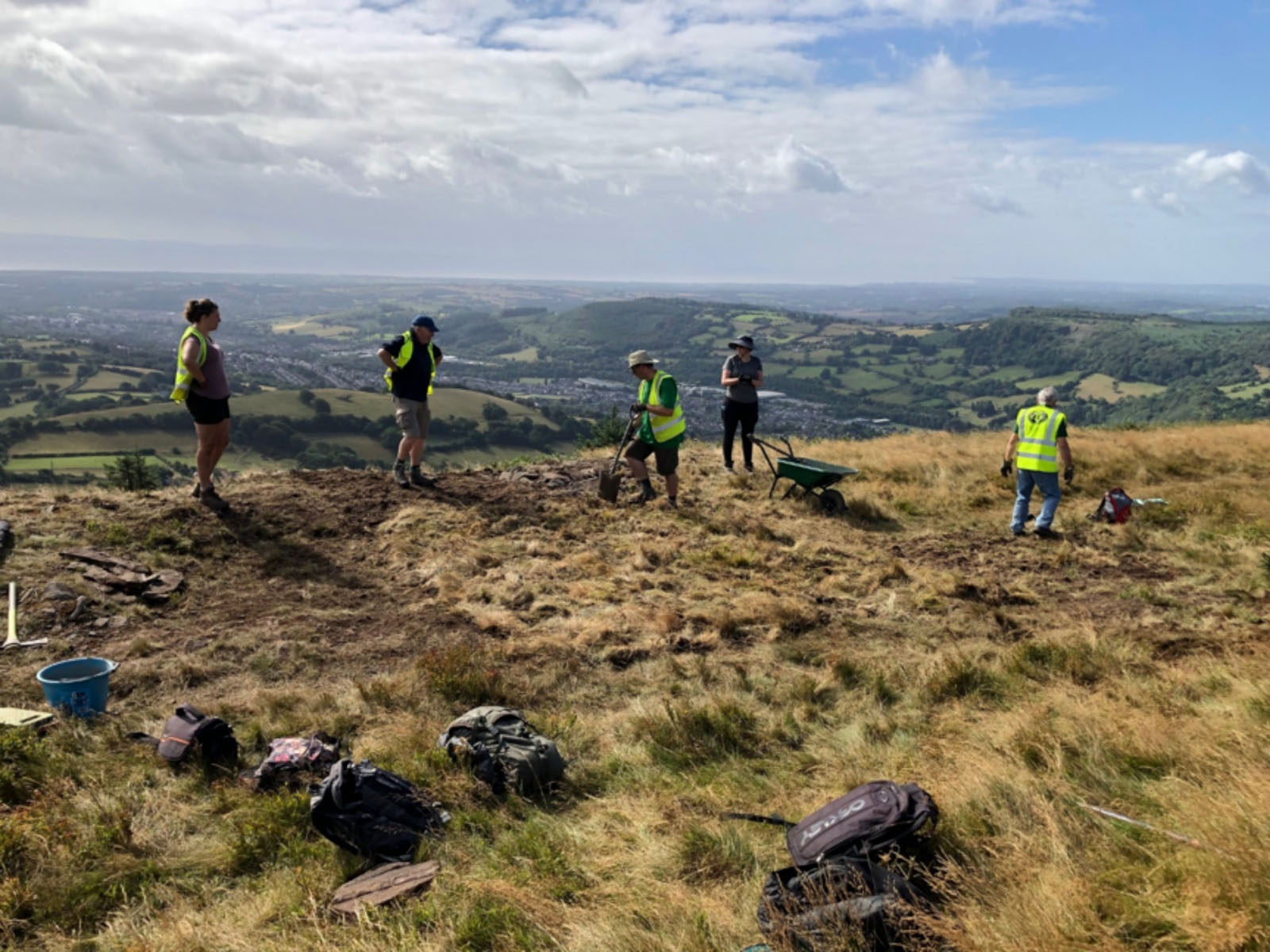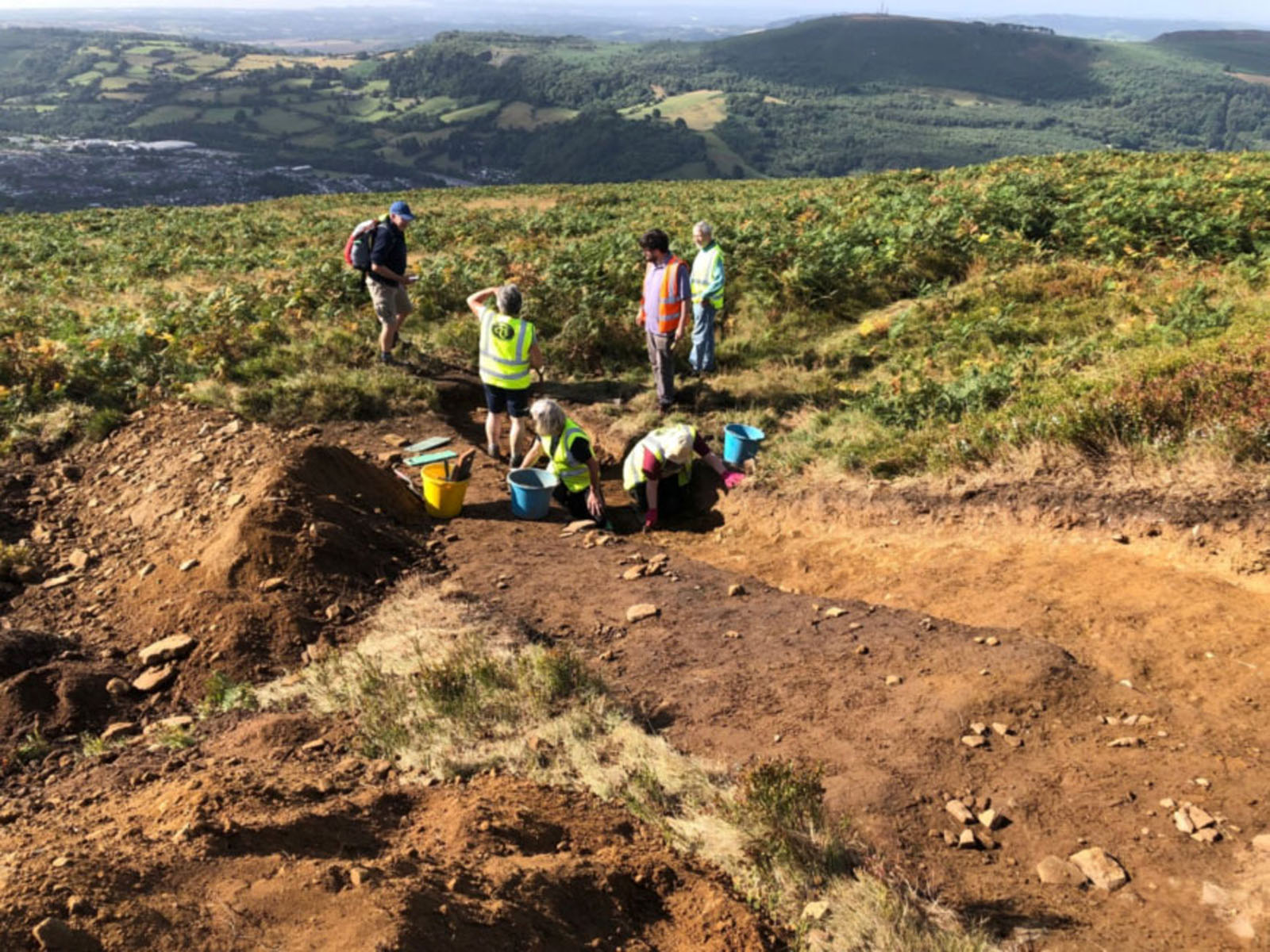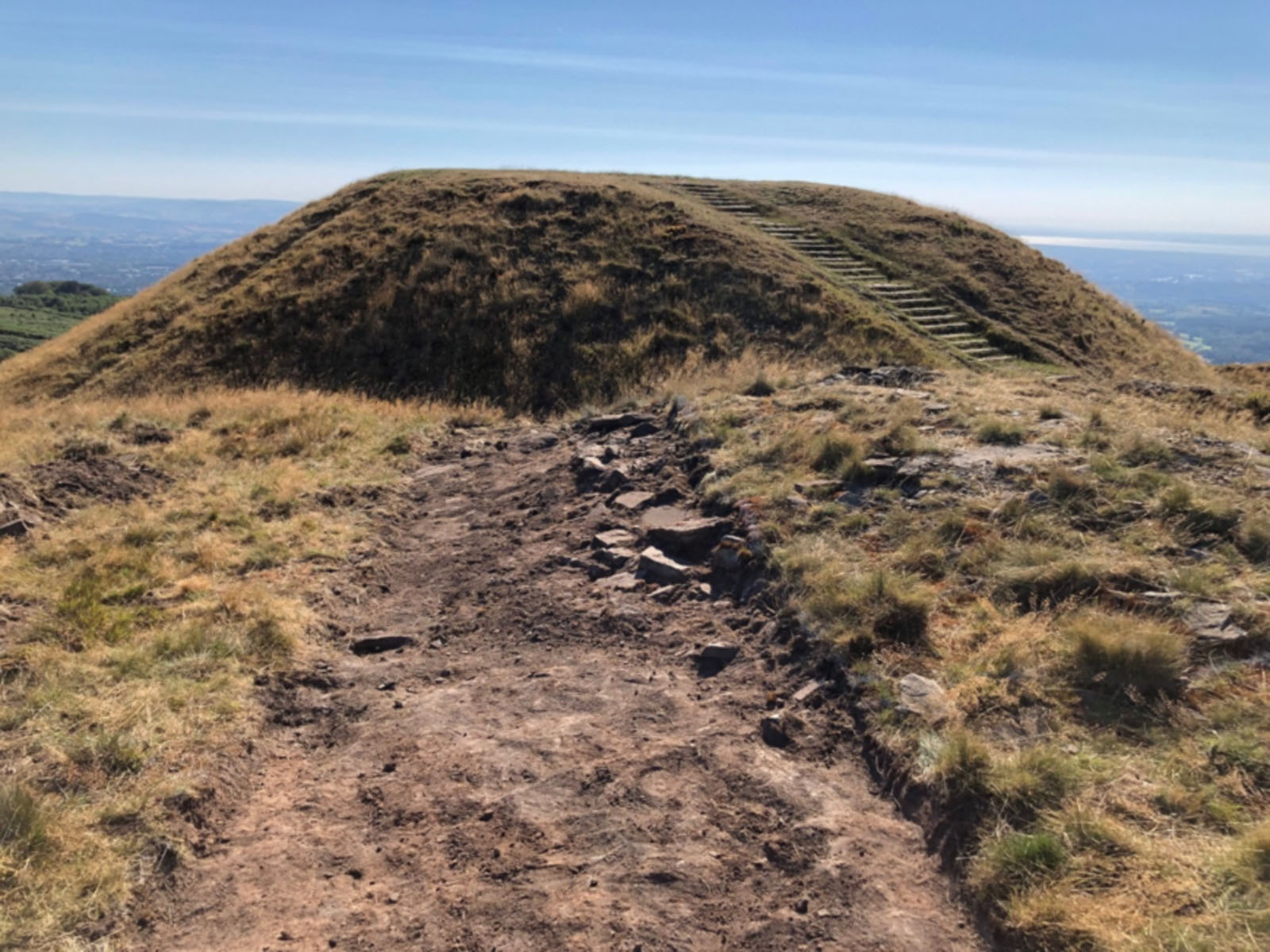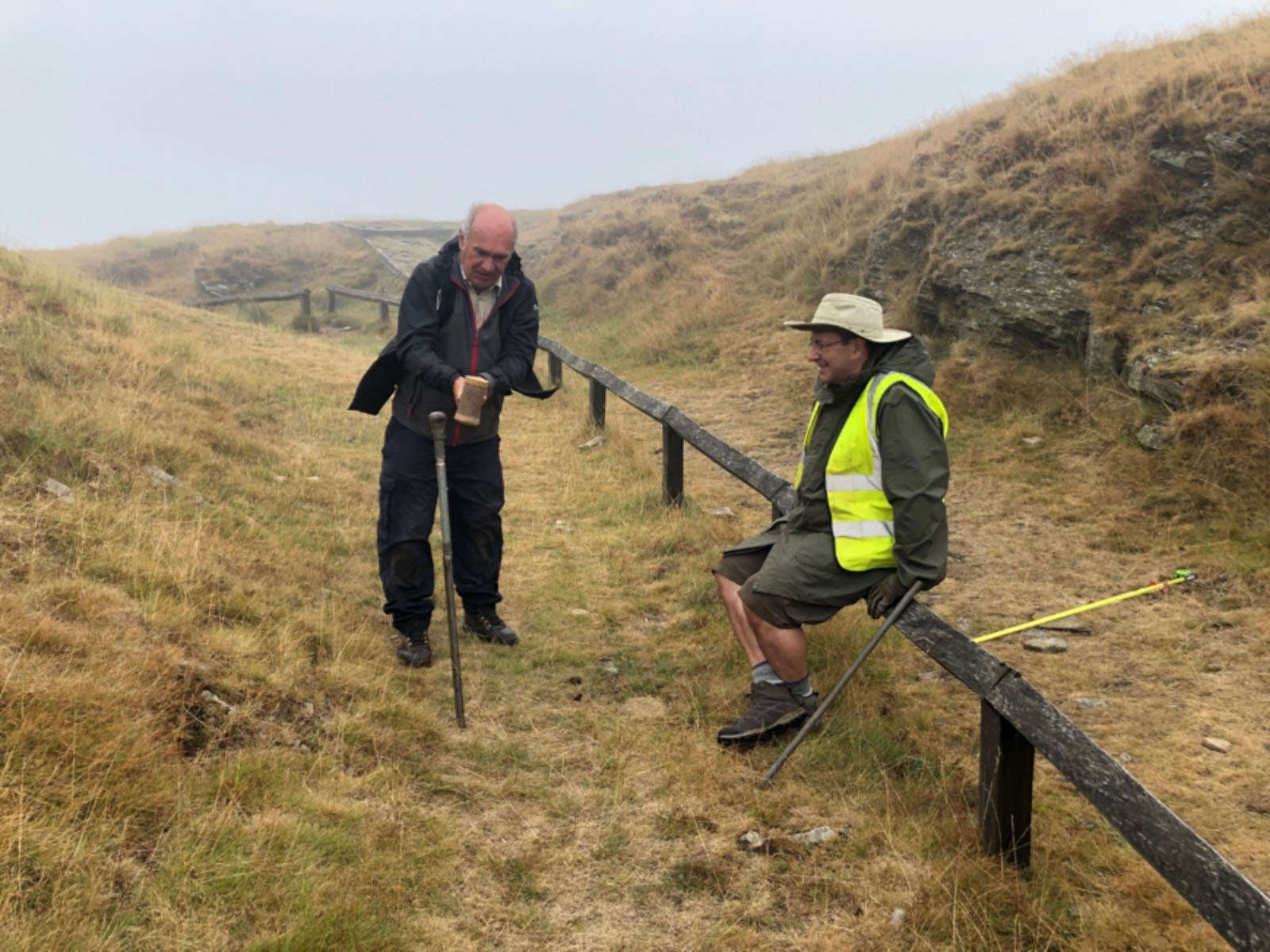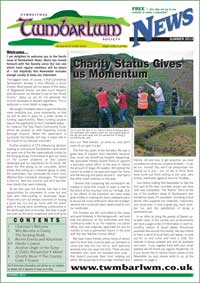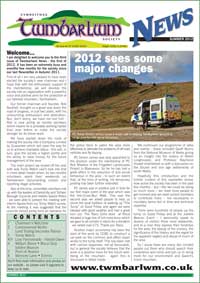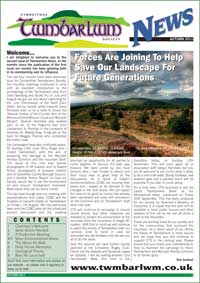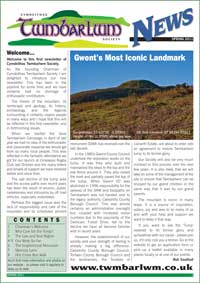Twmbarlwm Dig 2022 – Week 2
Twmbarlwm Excavation 2022 – Week Two
And here’s a few words from our man at CPAT, Wil Logan, on how he saw the events of the past week:
The second week of excavation saw a return to more temperate (and more typical) excavating conditions at Twmbarlwm which made digging much more pleasant for all involved.
Investigations in the first trench to be opened confirmed that the stone here appeared to be largely dumped or upcast material, probably excavated from the lower part of the ditch, forming a bank which was still over a metre thick. There are several points in the fort’s construction where these collections of stone are visible as part of the bank structure. It is possible they were used to help mark out the form of the hill fort during the initial construction phase. Following excavation and recording the trench was expertly backfilled and will be difficult to discern once the turf material has re-established itself.
A trench has been excavated in the ditch below this in the hope of extracting organic material suitable for Carbon 14 dating.
The second main trench, opened in a gap in the line of the bank and ditch also on the southern side of the site has revealed part of the bank construction, almost hidden under several thousand years of wash or wind blown soil deposition off the top of the hill. Interestingly there is no evidence that a prehistoric ditch was ever excavated here, possibly due to the presence of the compact bedrock outcropping in this location. It is possible that the ditch in this location was formed by the construction of a small earthen bank on the outer side of the ditch (counterscarp). Fortified sites often lack complete defensive circuits, especially where geographical features like cliff faces or rivers made them unnecessary.
The final of the three planned trenches which was excavated to investigate a possible cairn located adjacent to the motte has determined that this feature is quite structured and is not simply a clearance feature (where stone is piled to clear a cultivated field for example). No further work has been deemed necessary and the trench will remain open until next week.
An auger transect of the motte and motte ditch was also carried out in Week 2. An auger is a narrow circular tool which is hammered into the earth to extract a stratified (layered) soil sample which lets us know what the soil looks like without having to dig a large deep hole in the ground. The auger failed to remove any material from the motte ditch suggesting that the upper material within it is small fine stone material. However a sample taken from the motte itself revealed that approximately 2m of the upper construction is artificial, and also revealed the turf line (representing the original ground level) underlying it.
Week 2 has been very productive. Next week will involve a fair amount of recording and trench backfilling, but there will still be new excavation carried out. It is hoped, time permitting to investigate the motte ditch, in advance of a more extensive excavation in this location to be carried out in future.


